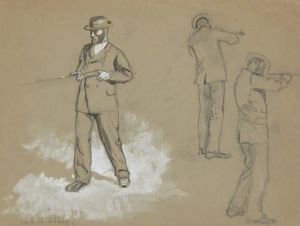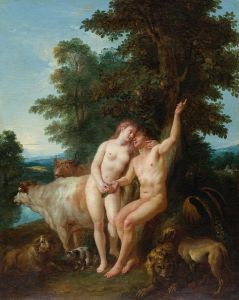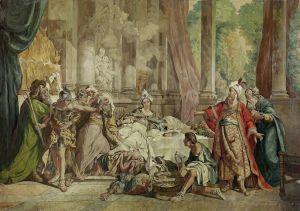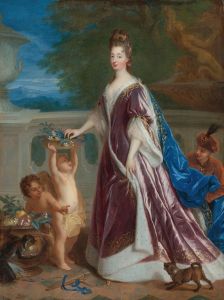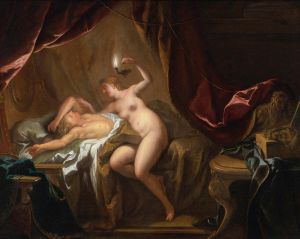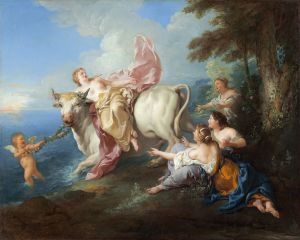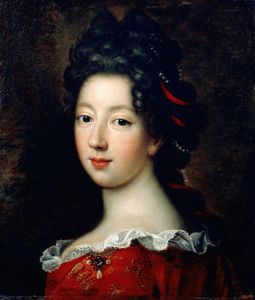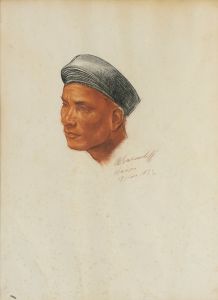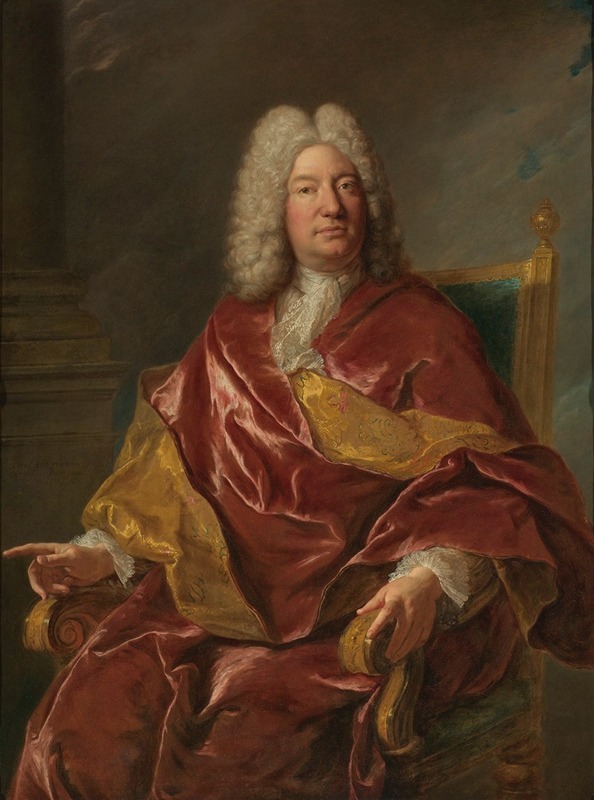
Portrait Of A Man
A hand-painted replica of Jean-François de Troy’s masterpiece Portrait Of A Man, meticulously crafted by professional artists to capture the true essence of the original. Each piece is created with museum-quality canvas and rare mineral pigments, carefully painted by experienced artists with delicate brushstrokes and rich, layered colors to perfectly recreate the texture of the original artwork. Unlike machine-printed reproductions, this hand-painted version brings the painting to life, infused with the artist’s emotions and skill in every stroke. Whether for personal collection or home decoration, it instantly elevates the artistic atmosphere of any space.
Jean-François de Troy (1679–1752) was a prominent French Rococo painter and tapestry designer, known for his historical and genre scenes, as well as his portraits. One of his notable works is "Portrait of a Man," which exemplifies his skill in capturing the essence and character of his subjects.
"Portrait of a Man" is an oil painting that showcases de Troy's mastery in the use of color, light, and texture. The subject of the painting is an unidentified man, depicted with a sense of realism and attention to detail that was characteristic of de Troy's portraiture. The man is dressed in contemporary 18th-century attire, which includes a finely tailored coat and a waistcoat, reflecting the fashion of the period. His facial expression is calm and composed, suggesting a person of confidence and stature.
Jean-François de Troy was born into an artistic family in Paris. His father, François de Troy, was also a renowned painter, and Jean-François received his initial training under his father's guidance. He later studied in Italy, where he was influenced by the works of the great masters of the Renaissance and Baroque periods. This influence is evident in his use of chiaroscuro and his ability to render textures and fabrics with great precision.
Throughout his career, de Troy held several prestigious positions, including the director of the French Academy in Rome. His works were highly sought after by the French aristocracy and royalty, and he received numerous commissions for both portraits and large-scale historical paintings. "Portrait of a Man" is a testament to his ability to capture the personality and social status of his subjects through his meticulous attention to detail and his sophisticated use of color and light.
The painting is characterized by its balanced composition and the subtle interplay of light and shadow. De Troy's use of a muted color palette, with rich earth tones and soft highlights, creates a sense of depth and three-dimensionality. The background is kept simple, allowing the viewer to focus entirely on the subject. The man's gaze is directed slightly to the side, adding a sense of introspection and contemplation to the portrait.
"Portrait of a Man" reflects the Rococo style's emphasis on elegance, refinement, and the depiction of the leisurely life of the upper classes. However, de Troy's approach to portraiture also incorporates elements of realism, making his subjects appear lifelike and relatable. This combination of stylistic elements makes his portraits stand out among those of his contemporaries.
Today, Jean-François de Troy's works can be found in various museums and private collections around the world. "Portrait of a Man" remains an important example of his portraiture, demonstrating his technical skill and his ability to convey the character and status of his subjects. Through this painting, de Troy has left a lasting legacy in the world of art, contributing to the rich tapestry of 18th-century French painting.






